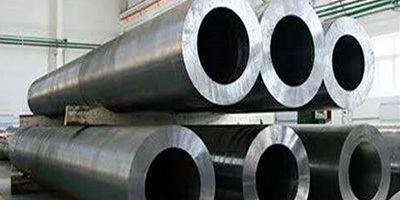
What is free forging of forged flanges?
Release time:
20 Jan,2025
Pressure vessel flanges are classified according to the connection of the flange ring into: integral flanges, loose flanges, and arbitrary flanges. The most commonly used JB/T4701—4703 standard pressure vessel flanges in China include three types: Type A flat welding flange, Type B flat welding flange, and long neck butt welding flange, among which Type A and Type B flat welding flanges belong to arbitrary flanges. Flanges, along with their gaskets and fasteners, are collectively referred to as flange joints. Flange joints are a type of component that is extremely common in engineering design and has a very wide range of applications, and they are also key areas where problems are likely to arise during engineering design and use. The design of flange joints is one of the important aspects of pressure vessel design. When selecting standard Type A flanges and calculating non-standard Type A flanges, there is a serious phenomenon of designers choosing inappropriate materials, and it is also common to replace Type A flat welding flanges with Type B flat welding flanges or even long neck butt welding flanges, leading to unnecessary waste. Therefore, it is necessary to discuss the selection and calculation of commonly used Type A flat welding flanges.
Pressure vessel flanges are primarily used for welding stamped parts made of low carbon steel and low alloy steel. There are many varieties of pressure vessel flanges, including pressure vessel flanges for plate components, as well as pressure vessel flanges for nuts, screws, wire interspersed pressure vessel flanges, pipe pressure vessel flanges, and plate T-type pressure vessel flanges.
The most suitable thickness for plate component pressure vessel flanges is 0.5-4mm. When welding thinner plates, the design requirements for the protrusions are strict, and a highly responsive welding machine is needed, so plates with a thickness of less than 0.25mm are more easily welded using spot welding.
Compared to spot welding, pressure vessel flanges have the following advantages:
1) Multiple weld points can be welded within a single welding cycle. This not only increases productivity but also avoids the impact of diversion. Therefore, weld points can be arranged in narrow areas without being limited by the distance between points.
2) Because the current density is concentrated at the protrusions, the current density is high, allowing for welding with a smaller current, and reliably forming a smaller molten core. In spot welding, it is very difficult to form a molten core smaller than a certain size corresponding to a specific plate thickness.
3) The position of the protrusions is precise, and the dimensions are consistent, resulting in relatively uniform strength at each point. Therefore, for a given strength, the size of the weld points on pressure vessel flanges can be smaller than those of spot welding.
4) Because a large flat electrode is used, and the protrusions are set on one workpiece, it can minimize the indentation on the exposed surface of another workpiece. The current density of the large flat electrode is low, and it dissipates heat well, resulting in much less wear on the electrode compared to spot welding, thus significantly reducing the maintenance and repair costs of the electrode.
5) Compared to spot welding, the effects of oil, rust, oxide scale, plating, and other coatings on the surface of the workpiece on pressure vessel flanges are relatively small, but a clean surface can still achieve relatively stable quality.
The drawbacks of pressure vessel flanges are that they require additional processing procedures for stamping pressure vessel flanges; the electrodes are relatively complex; and since multiple weld points must be welded, high electrode pressure and high mechanical precision are required for high-power welding machines.
Related News
Flange Standards and Selection Methods
20 Jan,2025
What is free forging of forged flanges?
20 Jan,2025



